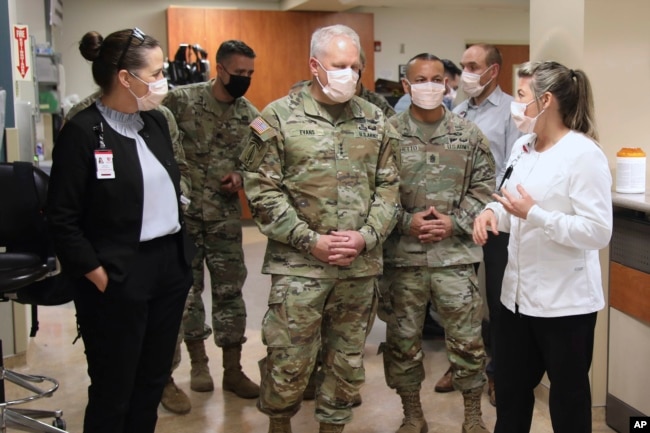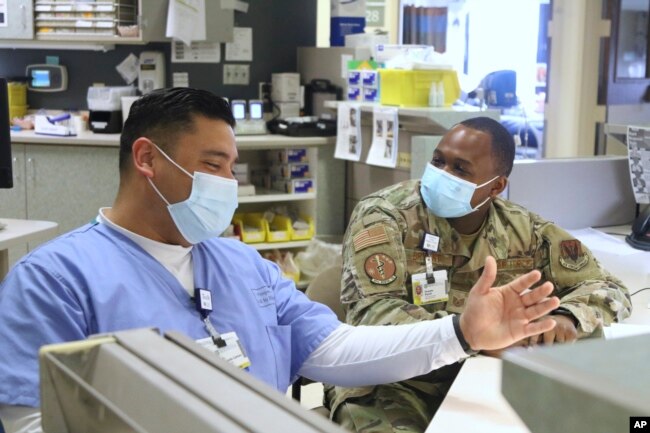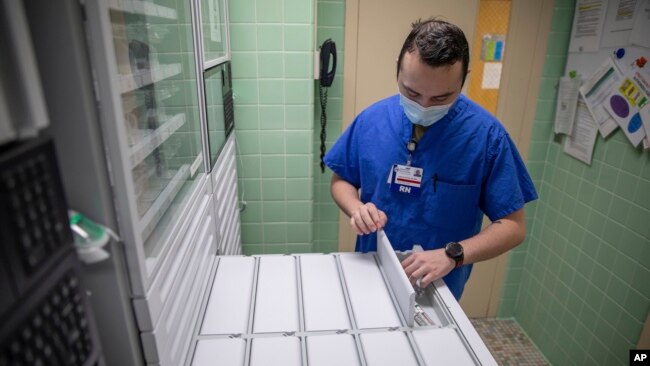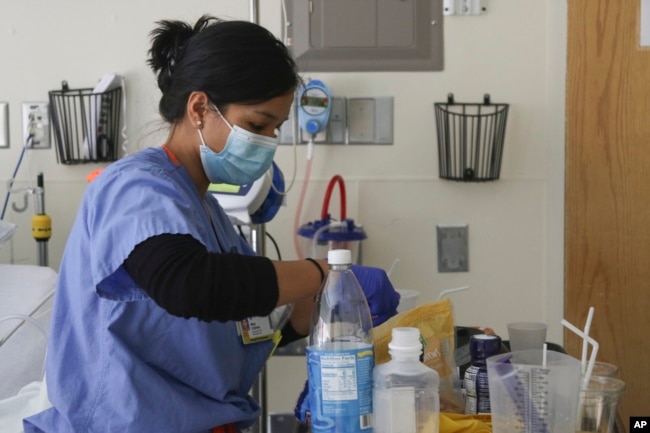何事においてもPDCAは重要ですね!!
次々と襲ってくるウィルスに戦い続けなければなりません。
さて、今日もVOAで英語を学びましょう!!
対策に貢献した米軍が、次のパンデミックに備える (和訳)
After Helping Fight COVID-19, US Military Plans for Next Pandemic
April 17,2022
アメリカ軍は、全米の州や地方自治体のCOVID-19対策を支援するため、約24,000人の部隊を配備しています。その任務は、少なくとも現時点では終了しています。国防総省は、次に起こりうる感染症の流行に備え、準備を進めています。そして、COVID-19の作戦に参加した軍人の経験から学ぼうとしています。
グレン・ヴァンハーク大将は、「この経験は、またパンデミックやその他の世界の危機や紛争が起こった場合に備えて、軍のリーダーが配備すべき部隊の数や種類を決定するのに役立つだろう」と述べています。彼は米北方軍を率い、国土防衛の責任者です。
ヴァンハーク将軍はAP通信に対し、同司令部が現在の軍のパンデミックおよび感染症計画を書き直していることを明らかにしました。また当局は、米軍の医療従事者の能力を試すためのウォーゲーム演習も計画しています。
派遣された24,000人の米軍兵士のうち、約6,000人の医療従事者が病院での診療を支援するために派遣されました。また、約5,000人の兵士が予防接種を手伝いました。
ヴァンヘルク氏は、パンデミックにおける軍隊の使われ方は、時間とともに”変容”していったと指摘します。軍隊が学んだ主なことの1つは、部隊や施設を大量に動かすよりも、小さなチームの働きの方が価値があることが分かったことだと彼は言います。
パンデミックの初期には、国防省はニューヨークとロサンゼルスに病院船を派遣しました。また、州の指導者の要請で、他の州にも病院事業を立ち上げました。これは、COVID-19以外の患者の治療に軍隊を使うことで、病院がより深刻なパンデミック症例に集中できるようにするためでした。
しかし、軍艦のイメージは強烈でしたが、多くのベッドは使われずに終わったのです。COVID-19以外の治療を必要とする患者は予想より少なく、病院は依然としてパンデミックによって過重な負担を強いられていたのです。このため、軍の配備方法が変更されました。軍隊は、過労の職員の穴埋めとして、あるいは追加の治療区域で職員とともに働くために病院に送られたのです。
スザンヌ・コブリー中佐は、12月から2月にかけてミシガン州グランドラピッズの2つの病院に配備された陸軍チームを率いていました。彼女はAP通信の記者に、オミクロン版COVID-19が急速に広まる中、チームがミシガン州の病院で助けたある患者について話ししました。
そのCOVID-19の患者はひどい呼吸困難に陥っていましたが、コブリー氏によれば、その病院の患者用ベッドはすべて満床であったと言います。
しかし、コブリーさんのチームの看護婦さんが、臨時の治療室に空きがあることを知っていました。その看護師はすぐに行動を開始し、患者をその場所に運ぶために急ぎました。その途中、担架が壁にぶつかり、少し傷つけたそうです。
その様子を見たコブレイ氏は、患者を助けようとする看護師の意欲を賞賛しました。
「彼女は、彼がそのベッドを手に入れるために、途中で壁を傷つけようとしていたのです。」と、コブレイ氏は言いました。「患者さんは必要な治療を受けることができるのです。それが使命です」と。
パンデミックのために派遣された最後の軍の医療チームは、先週、ユタ大学の病院での任務を終えました。しかし、当局によれば、COVID-19感染が再び増加した場合に備えて、約200人の部隊が5月末まで出動準備命令で拘束されているとのことです。
After Helping Fight COVID-19, US Military Plans for Next Pandemic
The United States military deployed about 24,000 troops to help state and local governments across the country fight COVID-19. That mission has ended, at least for now. The Department of Defense is making preparations for the next possible infectious disease spread. And, officials are seeking to learn from the experiences of service members who took part in the COVID-19 mission.
The experiences can help military leaders decide on the number and kinds of troops to deploy in case another pandemic or other world crises or conflicts happen, said General Glen VanHerck. He heads the U.S. Northern Command and is responsible for defense of the homeland.
VanHerck told The Associated Press that his command is rewriting the military’s current pandemic and infectious disease plans. Officials are also planning wargame exercises to test the abilities of U.S. military medical workers.
Of the 24,000 U.S. troops deployed, nearly 6,000 medical workers were sent to assist in hospitals. About 5,000 troops helped give vaccinations.
VanHerck noted that the ways military forces were used in the pandemic “morphed” over time. He said one of the main things the military learned was that the work of small teams proved to be more valuable than mass movements of troops and facilities.
In the early days of the pandemic, the Defense Department sent hospital ships to New York City and Los Angeles. They also set up hospital operations in other states at the request of state leaders. The idea was to use the troops to treat non-COVID-19 patients so that hospitals could center on more serious pandemic cases.
But while images of the military ships were powerful, many beds went unused. Fewer patients needed non-COVID-19 care than expected and hospitals were still overloaded by the pandemic. This led to changes in how military forces were deployed. Troops were sent to hospitals to fill in for overworked employees or to work alongside them in additional treatment areas.
Lieutenant Colonel Suzanne Cobleigh led an Army team that was deployed to two hospitals in Grand Rapids, Michigan, from December to February. She spoke to Associated Press reporters about one patient the team helped at a Michigan hospital as the Omicron version of COVID-19 was quickly spreading.
The COVID-19 patient was having severe breathing difficulties, but Cobleigh said all patient beds at the hospital were full.
An Army nurse on her team knew of an open space in a temporary treatment area. The nurse quickly went into action, hurrying to get the patient wheeled to the area. During the process, the gurney struck a wall, damaging it a little.
When she saw what happened, Cobleigh praised the nurse’s drive to help her patient.
“She’s going to damage the wall on the way there because he’s going to get that bed," Cobleigh said. "(The patient) is going to get the treatment he needs. That was the mission.”
The last military medical team deployed for the pandemic finished its assignment last week at the University of Utah hospital. But officials say about 200 troops are being held on prepare-to-deploy orders through the end of May in case COVID-19 infections rise again.
Words in This Story
mission – n. an important job, usually involving travel to somewhere
morph – n. to change from one thing to another over time
facility – n. a place, especially in buildings, where a particular activity happens



